#Advanced Trading Algorithms
Explore tagged Tumblr posts
Text
Unlock the Power of Advanced Trading Algorithms with Stockhunt – Precision, Speed, and Smart Investing
Step into the future of smart investing with Stockhunt, your trusted partner in leveraging Advanced Trading Algorithms for superior market performance. Designed for traders who demand accuracy, real-time decision-making, and data-driven strategies, Stockhunt’s proprietary systems harness the full potential of AI and machine learning to decode market trends and execute trades with unmatched efficiency. Whether you're a day trader, institutional investor, or financial enthusiast, our suite of Advanced Trading Algorithms empowers you to stay ahead of market volatility, minimize risk, and maximize returns. Choose Stockhunt – where innovation meets intelligent trading through cutting-edge Advanced Trading Algorithms.
0 notes
Text
eStock Studies: Online Trading Courses from Basics to Advanced.
eStock Studies: free Online Stock Market Trading Courses from Basic to Advanced, Including Algorithmic Trading Techniques, for Aspiring Trading Experts.
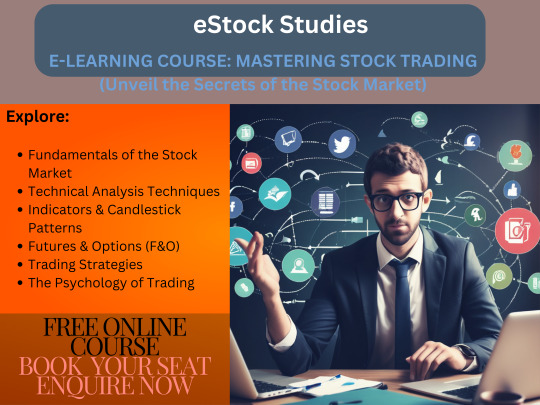
#estock studies#free online stock market trading courses#trading expert#Basic of Stock Market#ALGORITHMIC TRADING TECHNIQUES#trading from basic to advanced#free online Trading Courses#expert trading institute
2 notes
·
View notes
Text
The Digital Euro in 2025: How This Game-Changer Will Impact Forex Traders
The European Central Bank’s plan to roll out the Digital Euro in 2025 is set to reshape the forex landscape. As a central bank digital currency (CBDC), it promises greater financial inclusion, enhanced security, and faster transactions. But what does this mean for traders? Will it create new opportunities or add more volatility to the market? PipInfuse, a leading Forex & Investment consultancy, explores how the Digital Euro could impact currency trading, offering expert trading solutions to help you navigate the changes.

What is the Digital Euro and Why Does It Matter?
The Digital Euro is a fully digital form of fiat currency issued by the European Central Bank (ECB). Unlike cryptocurrencies, it is centralised and backed by the EU, ensuring stability. The key objectives behind its launch include:
Reducing dependence on cash
Enhancing payment security
Strengthening the EU’s financial sovereignty
Offering an alternative to private digital payment solutions
For forex traders, this introduction means potential shifts in liquidity, volatility, and trading strategies.
Impact on the Forex Market
1. Liquidity and Volatility Shifts
The Digital Euro is expected to influence EUR trading pairs significantly. If widely adopted, it could increase liquidity in the forex market, making it easier to trade. However, during the initial rollout, uncertainty and speculation may create short-term volatility, presenting both risks and opportunities.
2. Changes in EUR/USD and EUR/GBP Dynamics
With the EU strengthening its monetary control, traders may see the Digital Euro influencing major forex pairs like EUR/USD and EUR/GBP. Any policy shifts by the ECB regarding CBDC interest rates or usage restrictions could impact price action, requiring expert market analysis to make informed trading decisions.
3. Effect on Forex Trading Strategies
Profitable forex strategies will need to adapt to the Digital Euro’s influence. Algorithmic trading models, liquidity forecasting, and AI-based analysis will become even more crucial. PipInfuse provides advanced forex tools and expert solutions tailored for all trader types, helping traders stay ahead of market changes.
4. Regulation and Transparency
The introduction of the Digital Euro could lead to stricter regulatory measures affecting brokers and forex trading platforms. While increased transparency may benefit traders, brokers offering unregulated services might face challenges. Trusted forex partners and copy trading solutions will become even more valuable for those looking to trade securely.
How Traders Can Prepare for the Digital Euro
Stay Updated with Expert Insights: Following reliable sources like PipInfuse ensures traders receive timely forex trading insights and expert market analysis on the Digital Euro’s impact.
Upgrade Trading Tools: As the forex market evolves, using advanced analytics and automation tools will be crucial for staying competitive.
Refine Risk Management: Increased volatility requires disciplined risk management. A well-structured forex trading plan is essential to mitigate potential losses.
Seek Expert Consultation: Understanding the broader economic impact of CBDCs can be complex. Free forex trading plan and expert consultation by PipInfuse can help traders develop strategies tailored to the changing forex landscape.
The Digital Euro marks a major shift in the financial world, with significant implications for forex traders. Whether it leads to increased liquidity, regulatory challenges, or new trading opportunities, being prepared is key. PipInfuse, an expert forex trading and investment consultancy, provides traders with the knowledge, tools, and strategies to navigate these changes confidently. By staying informed and leveraging expert trading solutions, traders can turn this disruption into a profitable opportunity.
Happy Trading
PipInfuse
#Digital Euro#Forex Trading#CBDC#Central Bank Digital Currency#Forex Market#EUR/USD#EUR/GBP#Forex Strategies#Risk Management#Advanced Forex Tools#Expert Trading Solutions#PipInfuse#Forex & Investment Consultancy#Forex Trading Insights#Market Analysis#Trusted Forex Partners#Copy Trading Solutions#Free Forex Trading Plan#Expert Consultation#Forex News#Trading Opportunities#Forex Regulation#Liquidity#Volatility#ECB#Algorithmic Trading#AI in Forex#Forex Brokers#Forex Education
0 notes
Text
Advanced Applications of Williams Moving Average in Modern Futures Trading
The Williams Moving Average has evolved into a sophisticated tool used by professional futures traders, algorithmic trading systems, and institutional investors. Its advanced capabilities in trend detection and market timing make it particularly valuable in modern trading environments.
Advanced applications of the WMA include multi-timeframe analysis, volatility adaptation, dynamic support/resistance levels, momentum confirmation, and risk management implementation. These techniques are especially effective in high-volume futures markets, commodity trading, index futures, currency futures, and energy futures.
These sophisticated applications provide more precise entry/exit points, better risk management, reduced false signals, enhanced trend confirmation, and improved overall trading performance.
Advanced WMA Implementation Strategies:
Adaptive Time-Frame System:
Use multiple WMAs of different lengths
Adjust WMA periods based on market volatility
Implement dynamic crossover signals
Create composite trend signals
Volatility-Based Strategy:
Modify WMA length based on ATR
Adjust position sizing with volatility
Implement variable stop-loss levels
Use volatility filters for trade entry
Advanced Automated Implementation:
Code multiple WMA variations
Create adaptive parameter adjustments
Implement machine learning optimization
Develop sophisticated exit strategies
The advanced applications of the Williams Moving Average demonstrate its versatility and continued relevance in today's sophisticated trading landscape. As markets evolve and trading becomes increasingly automated, the ability to implement adaptive and dynamic strategies becomes crucial. The WMA's flexibility in accommodating these advanced applications makes it an invaluable tool for modern traders. By incorporating these sophisticated techniques into automated trading systems, traders can potentially achieve more consistent results while maintaining the ability to adapt to changing market conditions. As technology continues to advance, we can expect to see even more innovative applications of this versatile indicator in futures trading.
#advanced trading#professional trading#algorithmic strategies#sophisticated trading#futures markets#Williams Moving Average#volatility trading#automated systems#machine learning trading#adaptive trading#institutional trading#advanced indicators#algorithmic implementation#trading technology#market timing#risk assessment#quantitative analysis#systematic trading#trading optimization#professional trading strategies#trading automation#market analysis#technical trading#dynamic trading
1 note
·
View note
Text
In the dynamic financial world, situations keep changing daily, impacting intraday traders the most. Many might not be aware that intraday trading refers to purchasing and selling stocks on the same day. It is also known as day trading.
0 notes
Text
𝑴𝒐𝒓𝒆 𝑭𝒂𝒄𝒕𝒔 𝑨𝒃𝒐𝒖𝒕 𝑨𝒔𝒕𝒓𝒐𝒍𝒐𝒈𝒚 ⭑ 🌌 🪐
𝙰𝚜𝚝𝚛𝚘 𝙵𝚊𝚌𝚝𝚜 𝙿𝚝. 1
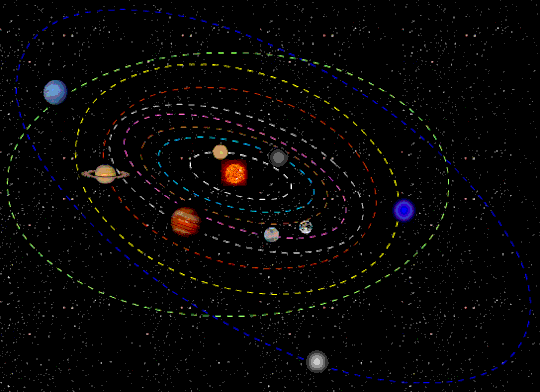
✩ Astrology is a form of divination. It’s not a religion, nor is it merely a fabrication. Rather, it’s a science that blends the metaphysical with the physical. At its core, astrology is about recognizing patterns that humans have observed throughout history.
✩ In ancient times, astrology and astronomy were intertwined, regarded as two halves of a whole. Both practices were seen as equally significant. It wasn’t until the Middle Ages, with the rise of scientific advancements, that astrology began to be dismissed as a pseudoscience/charlatan trade. However, before that shift, it held a place of deep respect and credibility in society.
✩ If you believe in the matrix theory, astrology serves as the code. It reveals hidden patterns and connections that manifest in our own lives, much like the underlying algorithms of a simulated reality. Each celestial alignment acts as a guiding signal, helping us navigate the complexities of existence. It also offers insights into our personalities, relationships, and life path overall. Just as the matrix can be decoded, astrology serves as a tool for understanding the forces at play in our universe, helping us navigate our path with greater awareness and intention.
✩ Overall, astrology serves as a cosmic weather report. While you can’t change the weather, you can prepare for it. Just as you would carry an umbrella on a rainy day, astrology offers insights that can help you navigate life’s challenges and opportunities, allowing you to make informed choices based on the energies at play.
©𝚊𝚜𝚝𝚛𝚘𝚜𝚘𝚞𝚕𝚍𝚒𝚟𝚒𝚗𝚒𝚝𝚢 𝙰𝚕𝚕 𝚁𝚒𝚐𝚑𝚝𝚜 𝚁𝚎𝚜𝚎𝚛𝚟𝚎𝚍.
#astrology#astrology facts#zodiac#astroblr#spirituality#cosmic witch#metaphysical#divination#astronomy#astro posts#fun facts#astrology posts#astrology observations#astrology predictions#natal chart#birth chart#astrological#the matrix#escape the matrix
51 notes
·
View notes
Text

High fantasy fans, I need your eyeballs.
My standalone fantasy novel MAEJ is to be published in October by tRaum Books, and the publisher and I seek folks willing to read a free advance review copy and leave an honest rating/review.
You can request a free copy of the book here: MAEJ Advance Review Copy Sign-Up
MAEJ is a unique, complex high fantasy novel featuring:
☞ gryphons
☞ berserker rages
☞ fate-worship
☞ algorithmic magic spells
☞ secret agent anthropologists
☞ hallucinogenic flower wine
☞ poetry battles
☞ Da Vincian flying contraptions
☞ a matriarchal society colliding with a patriarchal one
☞ an underground city
☞ a gaolbreak
☞ an awful politician getting assassinated while using the toilet
With “an elaborate and surprising plot [...] filled with political intrigue, action, twists, tragedy, and even a touch of romance”, MAEJ is a novel “unapologetic in its intelligence and dedication to doing strange, creative things with language” even as it offers “meaty commentary on the social construction of sex, sexuality, and gender” (in the words of one early reviewer).
If you want an ARC, here is that link again: MAEJ Advance Review Copy Sign-Up
You need not be a professional reviewer or somehow associated with the publishing trade. We welcome anybody who would like to read and review the novel.
You also have the option of waiting until 21 October, when you will be able to pay money for a book you could have gotten for free.
#high fantasy#novel#fantasy fiction#free books#books and reading#literature#free ebooks#epic fantasy
86 notes
·
View notes
Text
what is the use of AI?
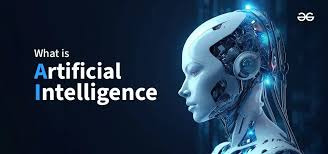
Ai has gone from science fiction to the everyday reality. From voice assistants like Siri and Alexa to smart recommendations on Netflix and self-driving cars.

Artificial Intelligence has many aspects of our daily lives. For example, smartphones use AI to power voice assistants like Siri and facial recognition features that unlock your device effortlessly.

In healthcare, AI helps doctors by analyzing medical images and assisting in diagnosing diseases more quickly and accurately.

The finance sector relies on AI for detecting fraud and optimizing trading algorithms to make smarter investment decisions.

Transportation has seen advances like self-driving cars and AI-powered traffic prediction apps that help reduce congestion and suggest the fastest routes.
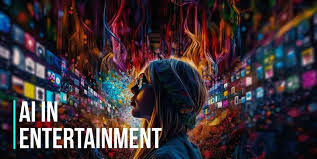
Even in entertainment, AI drives personalized recommendations on platforms like Netflix and Spotify, and controls adaptive non-player characters (NPCs) in video games to create more engaging experiences.
7 notes
·
View notes
Text
On April 1st, the day before President Donald Trump’s tariffs cratered global markets, House Speaker Mike Johnson told reporters “to trust the President’s instinct on the economy.” In the days afterward, Johnson’s message was echoed by legions of online supporters, who, amid plunging stock prices and predictions of a global recession, reminded one another to “trust the plan,” a catchphrase popular on QAnon forums.
For many devotees, Trump was a political savant. He was playing “4-D chess,” they said, supposedly outsmarting billionaire backers like Bill Ackman and Elon Musk, analysts who expected trade wars and job losses, and the twenty-three Nobel Prize-winning economists who cautioned that his policies would cause “higher prices, larger deficits, and greater inequality.” Elsewhere in the MAGAverse, self-proclaimed prophets announced that a divine plan was under way. In an April 7th video that’s been viewed nearly four hundred thousand times, the Iowa-based evangelist Julie Green claimed that God had warned her of the economic crash before the tariffs were announced. “Your economy, and all the markets, have been overtaken by the enemies from within,” God reportedly told her. “Their control over your nation, and its economy, is all collapsing in front of you.”
The tone marked a vibe shift from the technocracies of yesteryear. “I know that sometimes when I was President, and even when I was a candidate, folks would say, ‘Barack, you’re talking too long. You’re too professorial. You’re explaining stuff too much,’ ” Obama said, in 2018. His was a politics of complexity and deliberation, of data and binders and reasoned debate. Trump’s first term began in this style. Working alongside institutionalists like Paul Ryan and Mitch McConnell, and through appointees like Gary Cohn and H. R. McMaster, his Administration kicked off with a familiarly wonkish feel. But, in the eight years since Trump first took office, procedure has given way to prophecy. For millions of his followers, the President is no longer the Administrator-in-Chief but something closer to the hero Rama in the Hindu epic the Ramayana: a divine avatar destined to wage a holy war against evil.
Trump’s messianic appeal may seem like a twenty-first-century creation, a product of partisan rage, epistemic drift, and American-style evangelicalism. This is the conclusion of much of the analysis on the convergence of conspiratorial thinking and spiritual yearning, often termed “conspirituality.” In “The Age of Magical Overthinking,” the writer Amanda Montell treats the phenomenon as an algorithmic aberration: “Combine our organic animism with capitalism and tech-powered misinformation spread, and you get conspirituality.” Likewise, the scholars Charlotte Ward and David Voas, in their 2011 paper popularizing the term “conspirituality,” described it as a historically contingent synthesis: a fusion of the “female-dominated New Age (with its positive focus on self) and the male-dominated realm of conspiracy theory (with its negative focus on global politics).”
But to treat the right’s politico-mystical fervor as a modern malfunction is to miss its deeper logic. The Trumpian mystique echoes a dynamic that has occurred for centuries and across cultures. Its core ingredients—an alleged league of pedophiles, a godlike miracle worker, promises of an Edenic restoration—resemble archetypes that have long occupied humanity’s imagination. Trump’s followers may communicate through memes and message boards, but their faith belongs to a much older mythology: the eternal face-off between shaman and witch, prophet and cabal.
In 1987, an army of between seven and ten thousand soldiers advanced toward Uganda’s capital, Kampala. They were led by Alice Auma, a fishmonger turned spirit medium in her early thirties. A photograph from that period shows her seated between two followers. Dressed in a plain white top and a long patterned skirt, she looks less like a rebel commander than she does a schoolteacher or a market vender. To her supporters, though, she was a prophet possessed by the spirit of an Italian captain named Lakwena (“messenger,” in the Acholi language) sent to cleanse the land of sin and corruption. Known thereafter as Alice Lakwena, she pledged to destroy witches, purify warriors, and unite Ugandans against the President, Yoweri Museveni.
Alice was a healer before she was a fighter. Her first acolytes were fellow-members of the Acholi ethnic group. They feared extermination after Museveni, an ethnic Hima, overthrew Tito Okello, an Acholi officer, and the army demanded that all Acholi surrender their weapons. Her fighters later told missionaries, “The good Lord who had sent the Lakwena decided to change his work from that of a doctor to that of a military commander for one simple reason: it is useless to cure a man today only that he be killed the next day.”
Alice’s rise was not anomalous. As I explore in my new book, “Shamanism: The Timeless Religion,” upheaval often begets messianic revelation. When colonialism disrupted social orders in New Guinea and the surrounding islands, so-called cargo cults emerged, led by shaman-prophets who promised material abundance, the return of ancestors, and, in many instances, the end of foreign rule. In South Africa, the teen-age seer Nongqawuse foretold that the European settlers would be swept into the sea and a golden age would dawn—if only her people slaughtered their cattle and burned their crops. And in mid-nineteenth-century China, at a time of disasters, crippling taxation, and Western humiliation, a failed civil-service candidate claiming to be Christ’s brother launched the Taiping Rebellion, vowing heavenly rule on earth and the expulsion of demons.
Such movements share a predictable structure. People in crisis exhibit an instinctive paranoia. They are quick to blame suffering on individuals, especially the distrusted and powerful. Charismatic figures co-evolve with these understandings. They name enemies, invoke cosmic stakes, and present themselves as exceptional in precisely the ways necessary to vanquish agents of misfortune. They offer futures that are prosperous and pure but also backward-looking—lost paradises regained through sacrifice.
Core to all of this are depictions of evil. Conjured opponents are more than malicious—they’re inhuman, perverted, and often supernatural. In Alice’s sermons, they were sorcerers. In the Taiping Rebellion, they were demons dressed as bureaucrats. When I analyzed beliefs about harmful magic across sixty diverse societies, I found that the most feared malefactors were suspected not just of causing calamity but of engaging in moral depravity, with a cross-cultural fixation on cannibalism and sexual deviance. Among the Tlingit of the Pacific Northwest, witches (both male and female) were said to have sex with corpses and their own family members. The Santal, in South Asia, believed that witches (always female) copulated with spirit familiars and devoured the organs of children. Similar fears haunted Europeans and British Americans during the early modern period; one need only consult the witchcraft paintings of Francisco Goya, which show covens of half-naked women killing babies, eating people, and cavorting with the Devil.
These depictions serve a purpose. Portrayed as cannibals, child-killers, and corpse-defilers, enemies become existential threats and the worst imaginable offenders, lying beyond the pale of redemption. The fear of them galvanizes collective action and deepens devotion to leaders. Unable to be reformed, opponents must be destroyed.
Trumpism revives these mythic structures. This fact is nowhere clearer than in QAnon, the sprawling super-conspiracy centered on three beliefs: first, the government, mainstream media, and élite financial institutions are controlled by Satan-worshipping pedophiles who exploit children in a global sex-trafficking ring. Second, Donald Trump was recruited in a secret campaign to dismantle the cabal. Third, there will come a moment, “the Storm,” when mass arrests and public reckonings will purge the country of evil and restore the rightful to power.
QAnon arose during Trump’s first Presidency, growing from obscure online chatter into a mass movement. Its adherents numbered in the tens of thousands in 2018 and surged to millions by 2020. After Biden was inaugurated, in 2021, QAnon seemed like it might fizzle. Its central predictions—that Trump would win, that Hillary Clinton would be arrested, that televised tribunals would expose hidden debaucheries—failed to materialize. Q, the anonymous figure whose posts drove the movement’s folklore, stopped writing on message boards.
But the creed didn’t die. Like a spore-filled fungus, it ruptured, disseminating itself across the far right. By the end of 2021, polling by the Public Religion Research Institute revealed that more than one in six Americans accepted QAnon’s core beliefs, while only a third completely rejected the doctrine. Prophecies about salvation, spiritual warfare, and diabolic foes merged seamlessly into American evangelicalism; the disorientation of the pandemic deepened the appeal, and Q’s ideas found believers among yoga instructors, wellness influencers, and suburban moms.
The normalization of QAnon has coincided with a broader reënchantment. Astrology is booming, especially among millennials. Instagram teems with tarot, spell jars, and manifestation memes. WitchTok garners billions of views. In the 2021 census, “shamanism” ranked as the fastest-growing self-reported religion in England and Wales, beating out Zoroastrianism and Rastafari. Atheists, too, are feeling the vibes, with more than a quarter telling Pew, in 2023, that they’ve been contacted by a dead relative.
The two trends are connected. Trust in traditional sources of authority has plummeted. The public’s faith in Congress, the Supreme Court, and the media is scraping historic lows. Even confidence in scientists and doctors—long among the most trusted groups—has fallen. Between 2020 and 2024, the share of Americans who trusted scientists to act in the public’s best interest slipped from eighty-seven per cent to seventy-six per cent, while trust in physicians and hospitals plunged thirty points, to around forty per cent.
This climate of distrust has eroded institutional legitimacy. The German sociologist Max Weber famously observed that societies undergo a “routinization of charisma.” They use rules, procedures, and bureaucracy to tame the instability of magnetic leaders, with authority becoming less personal and more institutionalized. But today that process is unravelling. As many question the fairness and neutrality of political systems, the model of an ideal leader shifts from the administrative back to the messianic. And as faith in science and expertise recedes, it unleashes older, more intuitive ways of knowing—astrology, shamanism, divine revelation, and witchy paranoia.
The question, then, is whether the fervor will outlast the figurehead. Trump feels inherent to Trumpism. He also seems to have been uniquely prepared for a populist Presidency by a lifetime in the spotlight, including more than a decade as a reality-TV star. But, if his prophetic aura reflects a deeper, more universal pattern, what happens when he fades away? Does the mythology collapse? Or will a new messiah rise to take his place?
Alice’s power began to fade on September 30, 1987. Museveni’s military located her troops in the Tororo district, some two hundred kilometres from Uganda’s capital. The two armies had clashed many times before. Weeks earlier, Alice’s soldiers repelled his forces, nabbing a radio, AK-47s, and other weapons. This time was different. Museveni’s army encircled them and, for hours, pounded them with mortar fire. Alice’s troops eventually broke the siege, but at a cost. Nearly a third of the forces got separated and misdirected. Her civilian followers escaped into the swamps and lost their way. The battle was one of her bloodiest and most demoralizing.
Alice’s crusade had endured failures before, yet it had always managed to produce a scapegoat, often Alice herself. On at least two occasions, the spirit Lakwena—using her as his vessel, supposedly—rebuked her for disobedience. But, this time, the spell had been broken. Five hundred soldiers left immediately; in the month that followed, the movement bled support. On November 2nd, when Lakwena called on fighters, only three hundred and sixty answered. Days later, this remnant was scattered by Museveni’s army, and Alice disappeared into Kenya.
In interviews with Alice’s former soldiers, the German anthropologist Heike Behrend came across numerous theories for the defeat: the spirit Lakwena had punished them; it had deserted Alice for defying orders; Alice was a witch; Museveni had hired a “witch doctor” from far away who supplied his army with medicines powerful enough to counteract Lakwena’s blessings.
Yet, through another viewpoint, Alice’s movement didn’t die. It evolved. New prophets competed to revive her army in their image. Her father, Severino Lukoya, attracted two thousand followers and preached his own brand of end-time revelations, which centered on a “New World” in which God, humans, angels, and animals coexisted peacefully. His tenure was short-lived, however: within a year, he was declared a sinner and imprisoned by another Acholi prophet: Joseph Kony.
Claiming to be Alice’s cousin, Kony hijacked her campaign, turning it crueller and more militaristic. He made familiar promises of destroying evil and ushering in an age free of suffering, yet his techniques were more grotesque. He named his organization the Lord’s Resistance Army, and it became notorious for abducting tens of thousands of children for sex and warfare. In the nineteen-nineties and the two-thousands, the L.R.A. ravaged communities across east and central Africa, displacing some two million people and provoking the United States to spend millions a month to try to stop it. All the while, Kony retained his prophetic posture. In 2004, after the Ugandan President reportedly reached out for peace talks, Kony replied, “I will communicate with Museveni through the holy spirits and not through the telephone.”
Kony’s cannibalization of Alice Lakwena’s movement carries a dark lesson. Prophets may fail. Their predictions may go unfulfilled. They may die or abandon their followers when ruin is imminent. Yet new narratives can emerge to justify the collapse: the prophet was false; we were betrayed; the enemy had unnatural powers. Whatever the story, prophetic energy can survive, awaiting a new commander to channel it toward a more ambitious purification.
Trump is brusque and erratic, but he is far from irreplaceable. Although he has no clear successor, there are numerous contenders who orbit his office like hungry ghosts. These include the dynastic heirs (Donald Trump, Jr.), the administrative acolytes (J. D. Vance, Stephen Miller, Pam Bondi), and the new-media influencers (Tucker Carlson, Steve Bannon). Carlson, for his part, has begun speaking in occult terms, claiming this past November that he was “physically mauled” by a “demon.” Whether any of them will manage to consolidate Trump’s power remains to be seen. But unless the grievances that fuelled his apotheosis are reckoned with, his downfall may only clear the stage for someone else—more polished, more destructive, more ruthless—to ascend his holy throne and finish what he began.
11 notes
·
View notes
Text
Cybernetics with Chinese Characteristics & why we suck at the real Grand Strategy Game
Part 2 - The Quickening
Back in 2023, I wrote this more blog-like post about the mid 20th century McCarthyite purges of the Jet Propulsion Laboratory and the knock on effects that had - Namely the inception of the Chinese nuclear program, one-child policy and Chinese computing scene.
Since nothing is new under the sun, we have recently witnessed yet another example of America shooting itself in the foot, yet again, due to it's McCarthyite style purge of Chinese technology.
The release of the Chinese created AI system DeepSeek R1 last week has lead to the largest US stock market loss in history with NVIDIA stock decimated.
A record $465 Billion was wiped off its valuation in a single day. In 2024, the government of Turkey spent this much in a year on it's responsibilities?
Why did this happen?

As always, a lot can be put down to US foreign policy, and the in-intended implications of seemingly positive actions.
Do you want to start a trade war?
Back in the relatively uncontroversial days of the first Trump Presidency (Yes it does feel odd saying that) there were scandals with hardware provided by Chinese company Huawei. This led to the National Defense Authorization Act for Fiscal Year 2019 which explicitly banned Huawei and ZTE's hardware from use in US Government institutions. It also meant the US had to authorise US component manufacturer purchases by these companies.
Crucially this had a 27 month window. This allowed both companies to switch suppliers, and production to domestic suppliers. This actually led to Chinese chip advances. Following on from this came the 2022 move by the US Department of Commerce: "Commerce Implements New Export Controls on Advanced Computing and Semiconductor Manufacturing Items to the People’s Republic of China (PRC) ". This further limited the supply of semiconductor, supercomputer, and similar hardware to the PRC and associated countries.
Ok, well so far this is fairly dry stuff. You might think it would hamper Chinese development and, to some extent, it did.
It also proved to be the main catalyst for one financial quant.
Meet the Quant

Meet Liang Wenfeng (梁文锋). Educated to masters level, Liang was keen to apply machine learning methods to various field, but couldn't get a break. Finally, in the mid 2000's, he settled on a career investigating quantitative trading using machine learning techniques.
He became successful, founding several trading firms based around using machine learning methods, but his interest in base AI never seemed to cease. It was in 2021 that he started purchasing multiple NVIDIA GPUs to create a side project, leading to the creation of DeepSeek in 2023.
Now, due to import limitations, there were limitations on computation. This, however, did not stop DeepSeek's programming team.
Instead they used it as their strength.
Constrains Breed Innovation

For many years, the Western model of AI releases have focussed on making ever larger and larger models.
Why?
Let's break this down from an evolutionary point of view. Modern Western technology companies are largely monopolistic and monolithic. Many of these companies have previously hired staff at higher salaries not to fill roles, but to deny their competitors, and middle market firms, high-flying staff.
They also closely guard trade secrets. What's the training data? What algorithms were used in construction? Guess you'd better chat up some Silicon Valley bros at parties to find out.
For these kinds of firms, having control over large models, housed in data centres makes perfect sense. Controlling model deployment on their own computing systems, and not using local machines, means that they can not only control their systems more carefully, it also means that they can gatekeep access.
If your business model is to allow people to access your models on your servers, and your employees are focussed on making the biggest, best, models, there is no impetus to innovate more efficient, smaller models.
Companies such as OpenAI therefore have the following traits:
Research/Model focus on size over efficiency
Profit driven culture, with emphasis on closed source code
OpenAI's initial focus was as a non-for-profit developing Artificial General Intelligence. This became a for-profit driven company over time. - “I personally chose the price and thought we would make some money.” - Sam Altman
Staff working within paradigm they set in the early 2020's with established code libraries and direct contact with hardware companies creating chips
Significant capital investment - Upwards of several $ billions
DeepSeek, in comparison, is slightly different
For DeepSeek, necessity made innovation necessary. In order to create similar, or better models, than their counterparts, they needed to significantly optimise their code. This requires significantly more work to create, and write, libraries compared to OpenAI.
DeepSeek was started by financial quants, with backgrounds in mainly mathematics and AI. With a focus on mathematics and research, the main drive of many in the company has been exploration of the research space over concerns about profitability.
DeepSeek has also done what OpenAI stopped years ago: actually releasing the code and data for their models. Not only can these models therefore be run via their own gated servers, anyone can replicate their work and make their own system.
For DeepSeek, their traits were:
Research/Model focus on both efficiency and accuracy
Research driven culture, with open nature - “Basic science research rarely offers high returns on investment” - Liang Wenfeng
Strong mathematical background of staff, with ability to work around software, and hardware, constraints
Low capital investment of around $5.5 million

From an evolutionary point of view, DeepSeek's traits have outcompeted those of OpenAI.
More efficient models cost less to run. They also more portable to local machines.
The strong ability of DeepSeek's research focussed staff allowed them to innovate around hardware constraints
Opening up the code to everyone allows anyone (still with the right hardware) to make their own version.
To top it off, the cost to make, and run, DeepSeek R1 is a fraction of the cost of OpenAI's model
House of Cards

Now we can return to today. NVIDIA has lost significant market value. It's not just limited to NVIDIA, but to the entire US technology sector with the most AI adjacent companies losing from 10% to 30% of their valuation in a single day.
The culture, and business model, of OpenAI isn't just limited to OpenAI, but to the entire US technology ecosystem. The US model has been to create rentier-style financial instruments at sky-high valuations.
US tech stocks have been one of the only success stories for America over the past few decades, ever since the offshoring of many manufacturing industries. Like a lost long-unemployed Detroit auto-worker the US has been mainlining technology like Fentanyl, ignoring the anti-trust doctors advice, injecting pure deregulated substances into its veins.
The new AI boom? A new stronger hit, ready for Wall Street, and Private Equity to tie the tourniquet around its arm and pump it right into the arteries.
Like Prometheus, DeepSeek has delved deep and retrieved fire from the algorithmic gods, and shown it's creation to the world. The stock market is on fire, as the traders are coming off of their high, realising they still live in the ruin of barren, decrepit, warehouses and manufactories. The corporate heads, and company leaders reigning over the wreckage like feudal lords, collecting tithes from the serfs working their domain.
A Tale of Two Cities

The rise of DeepSeek isn't just a one-off story of derring-do in the AI world: It's a symbolic representation of the changing world order. DeepSeek is but one company among many who are outcompeting the US, and the world, in innovation.
Where once US free-markets led the world in manufacturing, technology and military capability, now the US is a country devoid of coherent state regulated free-market principles - its place as the singular world power decimated by destroying the very systems which made it great.
"Our merchants and master-manufacturers complain much of the bad effects of high wages in raising the price, and thereby lessening the sale of their goods both at home and abroad. They say nothing concerning the bad effects of high profits. They are silent with regard to the pernicious effects of their own gains. They complain only of those of other people." - Adam Smith, The Wealth of Nations
By selling the jobs of working class communities to overseas businesses, destroying unions and creating rentier based business models without significant anti-trust measures, US business and political elites have sealed the present fate of the country.
The CCP led, but strongly anti-trust enforcing, China has been able to innovate, ironically, using the free-market principles of Adam Smith to rise up and create some of the world's best innovations. The factories, opened by Western business leaders to avoid union/worker labour costs in their own countries, have led Shenzhen, and similar cities, to become hubs of technological innovation - compounding their ability to determine the future of technologies across the world.

Will America be able to regain its position on top? It's too early to say, but the innovative, talented, people who made America in the 20th century can certainly do it again.
As Franklin D. Roosevelt once said: “The liberty of a democracy is not safe if the people tolerated the growth of private power to a point where it becomes stronger than the democratic state itself...
We know now that Government by organized money is just as dangerous as Government by organized mob.
Never before in all our history have these forces been so united against one candidate as they stand today. They are unanimous in their hate for me—and I welcome their hatred.”

Until then, here's a farewell to the American Century 在那之前, 再见美国世纪
#cybernetics#cybernetic#ai#artificial intelligence#DeepSeek#OpenAI#ai technology#long reads#politics#us politics
14 notes
·
View notes
Text
𝐅𝐮𝐭𝐮𝐫𝐞 𝐨𝐟 𝐀𝐈-:

𝐖𝐡𝐚𝐭 𝐢𝐬 𝐀𝐫𝐭𝐢𝐟𝐢𝐜𝐢𝐚𝐥 𝐈𝐧𝐭𝐞𝐥𝐥𝐢𝐠𝐞𝐧𝐜𝐞 ?
Artificial intelligence (AI) refers to computer systems capable of performing complex tasks that historically only a human could do, such as reasoning, making decisions, or solving problems.
𝐂𝐮𝐫𝐫𝐞𝐧𝐭 𝐀𝐈 𝐂𝐚𝐩𝐚𝐛𝐢𝐥𝐢𝐭𝐢𝐞𝐬-:
AI today exhibits a wide range of capabilities, including natural language processing (NLP), machine learning (ML), computer vision, and generative AI. These capabilities are used in various applications like virtual assistants, recommendation systems, fraud detection, autonomous vehicles, and image generation. AI is also transforming industries like healthcare, finance, transportation, and creative domains.
𝐀𝐈 𝐀𝐩𝐩𝐬/𝐓𝐨𝐨𝐥𝐬-:
ChatGpt, Gemini, Duolingo etc are the major tools/apps of using AI.

𝐑𝐢𝐬𝐤𝐬 𝐨𝐟 𝐀𝐈-:
1. Bias and Discrimination: AI algorithms can be trained on biased data, leading to discriminatory outcomes in areas like hiring, lending, and even criminal justice.
2. Security Vulnerabilities: AI systems can be exploited through cybersecurity attacks, potentially leading to data breaches, system disruptions, or even the misuse of AI in malicious ways.
3. Privacy Violations: AI systems often rely on vast amounts of personal data, raising concerns about privacy and the potential for misuse of that data.
4. Job Displacement: Automation driven by AI can lead to job losses in various sectors, potentially causing economic and social disruption.

5. Misuse and Weaponization: AI can be used for malicious purposes, such as developing autonomous weapons systems, spreading disinformation, or manipulating public opinion.
6. Loss of Human Control: Advanced AI systems could potentially surpass human intelligence and become uncontrollable, raising concerns about the safety and well-being of humanity.
𝐅𝐮𝐭𝐮𝐫𝐞 𝐨𝐟 𝐀𝐈:-
Healthcare:AI will revolutionize medical diagnostics, personalize treatment plans, and assist in complex surgical procedures.
Workplace:AI will automate routine tasks, freeing up human workers for more strategic and creative roles.

Transportation:Autonomous vehicles and intelligent traffic management systems will enhance mobility and safety.
Finance:AI will reshape algorithmic trading, fraud detection, and economic forecasting.
Education:AI will personalize learning experiences and offer intelligent tutoring systems.
Manufacturing:AI will enable predictive maintenance, process optimization, and quality control.
Agriculture:AI will support precision farming, crop monitoring, and yield prediction.
#AI#Futuristic#technology#development#accurate#realistic#predictions#techworld#machinelearning#robotic
4 notes
·
View notes
Text
About Exnori

Hello, I am Exnori.com, a premier cryptocurrency exchange dedicated to revolutionizing the way you trade digital assets. I am here to offer a secure, efficient, and user-friendly platform that caters to both beginners and seasoned traders alike. Let me take you through the various aspects of my services and why I am the go-to choice for cryptocurrency trading.
Mission and Vision
At my core, my mission is to create a transparent, secure, and seamless trading environment. I strive to empower my users with the tools and knowledge they need to navigate the volatile world of cryptocurrencies confidently. My vision is to become a cornerstone of the cryptocurrency ecosystem, where traders can thrive and reach their financial goals.
Robust Security Protocols
Security is my utmost priority. I employ state-of-the-art encryption techniques, robust multi-factor authentication, and continuous monitoring to protect your assets and personal information. My security infrastructure is designed to be resilient against cyber threats, ensuring that your investments are safe with me.
User-Centric Design
I am designed with the user in mind. My platform boasts a clean, intuitive interface that simplifies the trading process. Whether you are accessing me via desktop or mobile, you will find a consistent and user-friendly experience that makes trading easy and accessible, no matter where you are.
Extensive Cryptocurrency Selection
I offer a vast selection of cryptocurrencies for trading. From established giants like Bitcoin, Ethereum, and Ripple to promising new altcoins, my diverse range of assets ensures that you can find the right opportunities to diversify your portfolio and maximize your trading potential.
Competitive and Transparent Fee Structure
I believe in providing value to my users. My fee structure is transparent and competitive, allowing you to understand exactly what you are paying for each transaction. By keeping fees low, I help you maximize your returns and make the most out of your trading activities.
Comprehensive Educational Resources
Knowledge is power, especially in the dynamic world of cryptocurrency. I offer a wealth of educational resources, including in-depth articles, video tutorials, and live webinars. These resources are tailored to help you understand market trends, develop effective trading strategies, and make informed decisions.
Advanced Trading Tools
For the more experienced traders, I provide a suite of advanced trading tools. These include detailed charting capabilities, technical indicators, and algorithmic trading support through my API. Whether you are a day trader or a long-term investor, my tools are designed to enhance your trading strategy and performance.
Community and Customer Support
I pride myself on fostering a vibrant community of traders. My platform encourages interaction and the exchange of ideas among users, creating a collaborative environment. Additionally, my customer support team is available 24/7 to assist you with any issues or questions you may have, ensuring a smooth and supportive trading experience.
Innovation and Continuous Improvement
The cryptocurrency market is constantly evolving, and so am I. I am committed to continuous innovation and regularly update my platform with new features and improvements. This dedication to staying ahead of the curve ensures that I can provide you with the best tools and technologies for successful trading.
Conclusion
Choosing Exnori.com means partnering with a platform that is dedicated to your success. With my robust security measures, user-centric design, extensive asset selection, competitive fees, and unwavering support, I am here to help you achieve your trading goals. Join me at Exnori.com and experience the future of cryptocurrency trading.
By joining Exnori.com, you are becoming part of a dynamic and forward-thinking community. Let's trade smarter, safer, and more effectively together. Welcome to Exnori.com, where your trading journey begins!
13 notes
·
View notes
Text
STOCK MARKET FREE WEBINARS.
eStock Studies: free Online Stock Market Trading webinars from Basic to Advanced, Including Algorithmic Trading Techniques, for Aspiring Trading Experts.
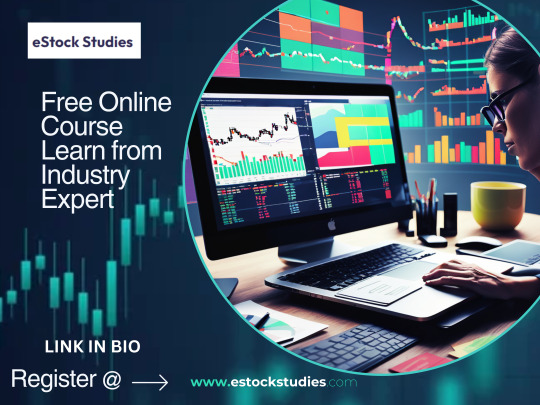
#estock studies#free online stock market trading webinars#trading expert#Basic of Stock Market#ALGORITHMIC TRADING TECHNIQUES#trading from basic to advanced#free online Trading webinars#expert trading institute
1 note
·
View note
Text
Do You Believe in Life After Tech? - A Critical Analysis of the Self-Optimization Focused Longevity Practices
The year is 2025. For an average human living in the territories dressed with internet cables, the day starts by grabbing the smartphone and consuming whatever the algorithm has to offer. From grocery shopping to becoming a millionaire overnight through crypto trades, everything seems possible from behind the screen. Societies are increasingly shaped by the very algorithms that dictate behaviors, tastes, and desires. From the frenzy of aesthetic surgery trends to the instantaneous viral success of products, from the commodification of reality to the proliferation of memes, we have become subjects of a culture where everything is recontextualized, reshaped, and hyper-real. Our daily lives and social habits are shaped by the algorithm we constantly labor to. The lines between the real and the simulated blur further, as Baudrillard whispers from the early days of the internet, "We live in a world where there is more and more information, and less and less meaning." (Baudrillard 1994:79). Here, meaning becomes a construct of virtuality, a mere image or simulation of the real. As our perception of reality becomes distorted in an AI-mediated fashion, whose pace of progress is beyond our perception of the pace of living, the human condition and social order are caught in a tension between the expectations of a world driven by accelerating technological advancements and the limitations of societies struggling to keep up. The contemporary condition whispers to us to either try and stay relevant or stay out of the picture. But even then, salvation is not guaranteed. In fact, nothing is guaranteed except the increasing quest for the relentless advance of an unchecked, accelerationist future.
This paper examines how the implications of contemporary accelerationist discourses of progress imply biopower and commodification of the subject by analyzing the longevity industry and public figures such as Bryan Johnson and viral self-optimization trends online. Through a critical analysis of the longevity industry, the paper aims to critically engage with the societal repercussions of accelerationist ideas.
#longevity#self optimisation#datafication#accelerationism#bryan johnson#nick land#don't die#blueprint
4 notes
·
View notes
Note
would you be willing to speak moron the Technocracy? you have very interesting takes on it and I would like to know more
Happily!
So to me the Technocracy (in its 20th and 21 century incarnations, anyway, the early Technocracy/Order of Reason is different in some significant respects) represents a view of the world that is divorced from anything other than data and hard facts. This viewpoint is not exclusive to scientism, the paradigm I discussed in my recent post on the Technocracy, and is in fact an arguable core of pragmatism itself— there are times when it is essential to put aside ideals, emotions, and speculation and work only with what you can tangibly interact with. Sometimes, you have to put aside how the world should or could be, and work only with what it provably, unquestionably is.
But if you’ve ever discussed politics with someone who keeps insisting “well, that’s just how the world is,” rather than engaging with new ways of thinking or unconventional ideals, you’ll probably have realized that this way of looking at things can be profoundly limiting.
(Incidentally, this is why I think there’s the tendency to align most Technocrats with Stasis/The Weaver— the paradigm of technology itself can be Dynamic, Entropic, and Questing in a lot of cases, but the way the Technocracy uses it is broadly static, I think.)
Let’s use an example here, and talk about climate change. There’s a tendency to view the people most effectively driving climate change— the executives who profit off it, the lobbyists and politicians who sustain it, the demagogues and conspiracists who argue against its reality— as malevolent. They know what they’re doing, they know how it hurts the world and the people who inhabit, and they’re fine with it. Maybe some of them even enjoy it. This is basically the tack Werewolf: The Apocalypse takes with Pentex, for instance.
And that view is, to a larger extent than I think is remotely comfortable, true. Reckoning with the truth in that is part of what makes Werewolf fun, and it’s also one of the drivers on Mage’s own Nephandi.
But, I think it’s also true that most of the people responsible for ecological collapse don’t see themselves as doing anything wrong, and are instead able to just elide the details of the morality and ramifications of their industry/system/ambition and focus purely on the benefit. As said earlier, that is sometimes necessary— in an immediate crisis it can even be a godsend— but in the long-term and on a wider scale it can be quite damaging.
See, if you focus only on quantifiable data, there’s a way to look at climate change as kind of a trade-off you make for important numbers to go up. Industrialization is, economically speaking, incredibly beneficial, the advancement of technology improves not only wealth, but also security, communication, and even quality of life, and from the point of view of certain fields (at least as they currently exist) like agriculture, commercial shipping, energy production, and so on, the policies that really combat the bad effects of climate change would be disastrous! Can’t we afford a few more degrees Celsius for all that?
And if you want to get really dark, there’s the fact that wealthy countries and their oligarchs are going to be the least affected by natural disasters, resource conflicts, and pandemics. It won’t be easy, sure, but nothing ever is, and from a realpolitik standpoint, if other nations (which are potential threats after all) suffer those bad effects more than you do, then maybe weathering the storm is tactically viable…
So all in all, don’t pump the brakes, and certainly don’t reinvent the wheel here! We’ve got a good thing going, and it could be chaos to stop it! Hell, with all the benefits we’re getting, we might even invent some gadget or technique to solve the worst of it.
But of course, this misses so much. In the same way that topics I wanted to touch on, like algorithmic culture and automation, may have valuable benefits from certain points of view, you have to look at the whole picture. With climate change, you already see mass extinctions, and no amount of restorative cloning is going to reverse the ecological damage there. We’re going to see an increase in displacement and homelessness by disasters and the need for people to relocate from dangerous areas, which will ruin lives, if not end them. To say nothing of the inhumanity of allowing suffering on this scale when something can be done about it, right now!
But how do you prove that “ecological damage,” “ruined lives,” and “inhumanity” are worse than the loss of trillions+ of dollars which we’d have to spend to avoid them? It’s apples to oranges— no, it’s the abstract to the concrete. If someone only wants to think about the numbers, then there’s at least a debate. There’s cost benefit analysis and logistic comparison— but not action.
Now, I am simplifying significantly here. There are many reasons that climate change and other societal crises aren’t addressed beyond scientism, or political inertia, or even just greed and selfishness. To name a few, we also struggle against ignorance, against fear, against exhaustion, against bigotry, against the unknown. It’s not so simple. One of the problems with the worldview I’m attacking is its tendency to simplify things by smoothing over the issues, so I don’t want to do that.
But I do think that the biggest issues in our society can’t be tackled with cold math and a focus on what nets the best cost-to-benefit ratio. I think in a lot of cases, that kind of thinking— which, to bring it back to the point, is the kind of thinking the Technocracy embodies— is what got us these issues in the first place.
God, was this too serious for a World of Darkness discussion?
Anyway, thanks for the question! I appreciate the chance to analyze the topic.
#mage the ascension#wod#world of darkness#essay?#ramblings#also#I know it was a typo#but ‘would you be willing to speak moron’ is a hilarious phrase#and I thank you for it#the technocratic union#technocracy
46 notes
·
View notes
Text

In recent years, algorithmic trading, or algo trading, has revolutionised the way financial markets operate. With the use of complex algorithms and advanced technology, traders can execute trades at lightning speeds, capturing opportunities in the market with precision and efficiency.
0 notes